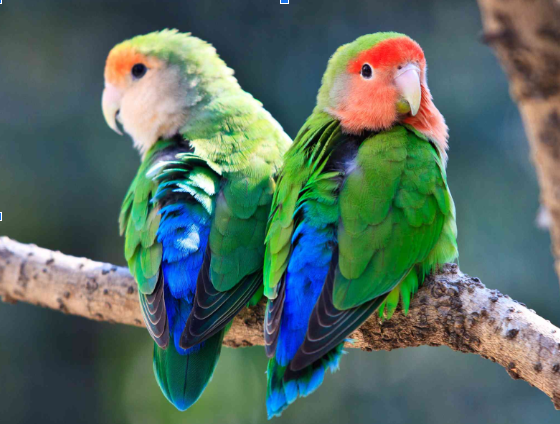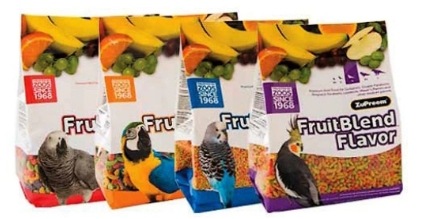How to Care for a Pet Bird

Introduction
Have you ever wanted to own a pet bird as your very own feathered companion? Have you ever wondered about what it takes to be able to care for these unique creatures? Well, this article is just right for you. Birds need a lot of care and attention in many different aspects. This article will detail their diets, playtime, routine, proper exercise, and enrichment as well as the behavioral characteristics and personalities of birds.
Proper diet
Birds need a healthy and nutritious diet in order to function properly just like humans do. Did you know that a bird’s diet which consists of only seeds is very unhealthy for them? Here’s why; bird seeds contain a lot of unnecessary fat, and it also lacks vitamins and minerals. Commercial bird seeds can also contain lots of artificial coloring and other unhealthy ingredients in them which can shorten their lifespan. Therefore seeds should only be fed in small quantities during training since it is of high value for many birds. If your bird has always been on a seed diet you should definitely consider transferring him to a pellet-based diet because of its health benefits. You should achieve this by slowly replacing the seeds with pellets. This will most likely take a while depending on how your feathered friend adjusts to this new diet which can sometimes take up to a few weeks or even months. If your bird is still refusing to eat the pellets try to encourage them by pretending to eat it in front of them since they are very social creatures by nature. Another option is using a metal bowl in which he can see himself; however, he will assume that it’s another bird eating it.
A proper diet for all pet birds should include pellets, fruits, and vegetables. Fruits and vegetables should always be cut up into bite-sized pieces for birds depending on their size. This makes it easy for them to pick it up with their beak or their feet, especially for smaller birds such as budgies, parakeets, doves, cockatiels, finches, etc. Vegetables and fruits should make up 60% of your bird’s diet. 50% of vegetables, 10% of fruit, and 40% of fruits should be fed daily. Never leave out fresh fruit or veggies for more than a day because it can create unwanted germs or bacteria that could be detrimental to your bird’s health.
Fruits and vegetables that are safe for birds include celery, apples, carrots, kale, spinach, cabbage, cauliflower, radish, lettuce, broccoli, squash, bok choy, peas, snap peas, green beans, string beans, mango, peaches, cucumber, cabbage, guava, bananas, and pears, etc.
Foods that you should avoid feeding your bird include tomatoes, chocolate, garlic, onions, avocados, caffeine, alcohol, and sugary snacks. These items should never be within your bird’s reach.
Bird Pellets Variety Fruit Blend
List of safe Fruits, Veggies, and Herbs for birds

Exercise and Training
Treats are a great way to encourage desired behaviors in birds just like all other animals. This is because treats are something they don’t get regularly or often and are considered high-value rewards. Because seeds have a lot of unwanted fat in them only offer it to your bird as a special reward. Healthy treat options include nutriberries, dried fruits, unsalted nuts, and your favorite fruit or veggie.
Exercise is just as important for birds as it is for humans, and it plays a significant role in their overall health and well-being. Encouraging your bird to move around by teaching it to do physical activities not only helps stabilize its mental health it also helps them maintain a steady and healthy body weight by lowering its cholesterol and triglycerides which is a type of natural fat that occurs in birds. Daily physical activity can also help boost a bird’s confidence level by increasing its feel-good hormones such as endorphins. This is especially important for your bird if your feathered friend does not get daily time outside of his/her enclosure.
Swings are a great way to encourage your bird to exercise in the cage. Be sure to check that the swing is birdproof, meaning that it is safe and he/she won’t get its wing stuck when flapping or climbing. All exercises that require birds to learn a new command can take a lot of time and practice so it requires a lot of patience on our part too. You can also place climbing toys such as rope toys or ladders around your bird’s cage or inside its enclosure. This allows your bird the opportunity to climb helping it to maintain a happy and healthy body
Fetching and Retrieving is a great game to play with your bird and also gives them mental stimulation. First, place your bird on a flat surface such as a floor or a long table. Then gently toss a ball/toy that your bird can easily pick up with their beak. Balls/toys you can use to play fetch with your bird are wiffle balls, crinkle balls, homemade origami paper balls, and or small stuffed animals/plushies as long as it’s lightweight. Start by gently tossing the object toward your bird; once he picks it up with his beak, tell him “Good Bird!”. Then once your bird gets the hang of this, keep repeating this until he gets the idea that he is supposed to bring it back to you. When he achieves this you can reward him with a treat such as seeds, millet, safflower, or unsalted nuts. Eventually, when your bird gets very good at this you can teach it basketball by teaching it to drop the ball or object into a hoop or container.
Step up is a great trick or command to teach your bird. This command once learned by your bird will get him to step up on your hand when you ask him to. First, move your hand close to your bird’s chest gently pressing against it which will tell him to step up where he/she will climb onto your hand. This trick is fairly easy to teach your bird because when you press your hand gently near its chest they naturally know to step up. Once they do this desired behavior start saying the word step up so they understand your command. After each successful repetition, a treat and praise should be rewarded to keep it nice and motivating for your bird.
Target training is also a very fun and easy trick to teach your bird. You can do this by using common household items such as a chopstick. You would slowly move this towards your bird by encouraging it to interact with it by gently biting it or touching it with its beak then give him a treat and tell him “good bird” or “pretty”. This will make your bird feel very safe and special around you. After they masters this very well they can hold the chopstick in one hand and a treat in the other so it encourages them to either step up or flies to the target stick to earn their reward. This can also be done repetitively and will quickly burn off your bird’s mental and physical energy.
There are also lots of other tricks you can teach your feathered friends such as Climbing the rope, peek-a-boo, dancing, and whistling. Training is such a great way to bond with your feathered companion. Additionally, a birdie play gym is also a great form of mental and physical stimulation.
Grooming
Birds do not require to be groomed often because although some owners may decide to clip their bird’s wings, it can also be very dangerous as well. This is especially true if you allow your bird outside of his cage fairly often. Birds enjoy being gently petted by their cheeks and the top of their head. You can also try and massage his neck helping him to relax by removing his pin feathers which can be very annoying to some birds. Your bird should get a bath at least once or twice a month. This can be done by spraying or misting your bird with a spray bottle. A thin layer of water in a bowl is also a great way to allow your feathered friend to take an enjoyable bath time.
I hope this article helped you to gain more knowledge about how to take care of a pet bird properly.






